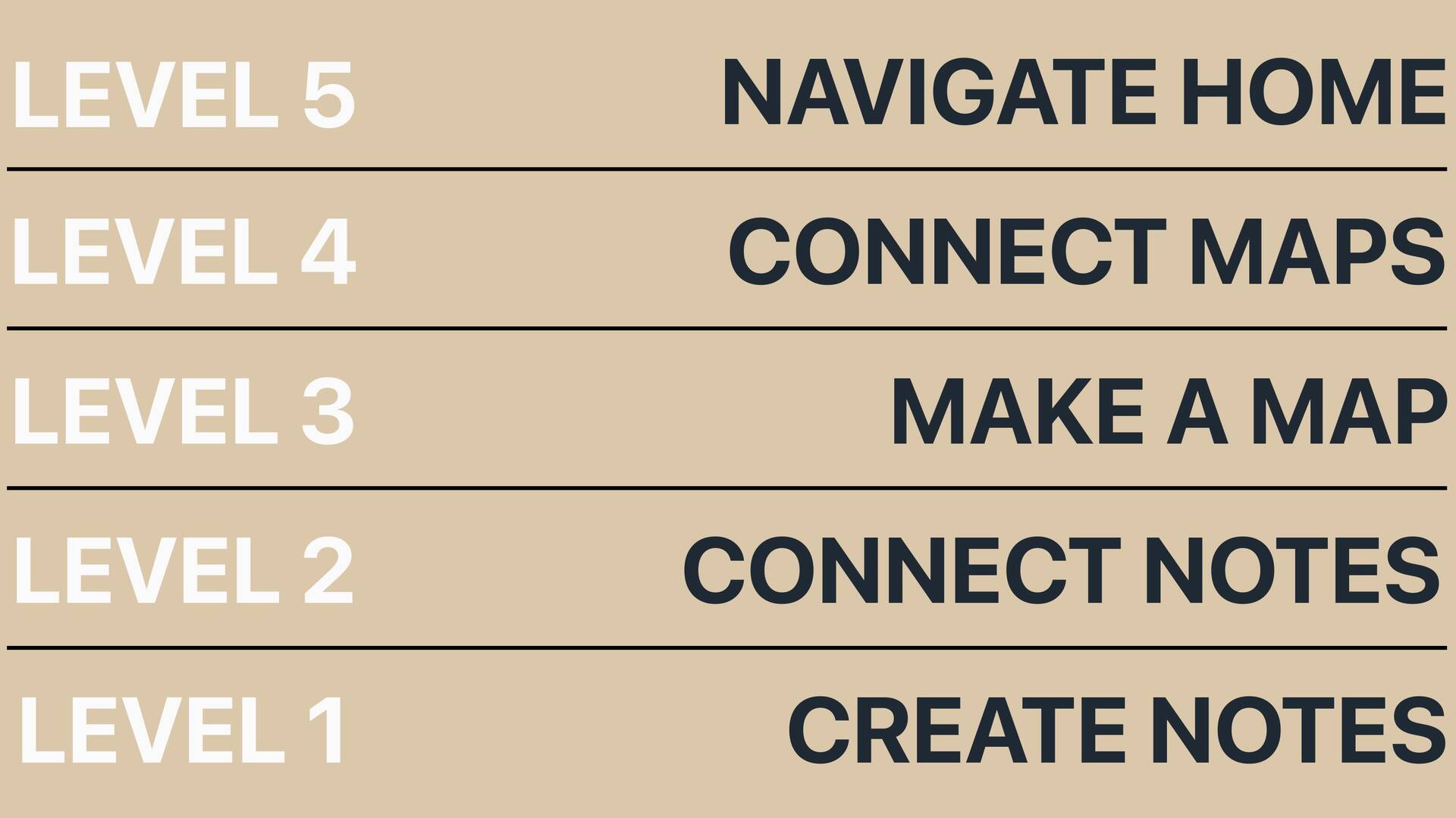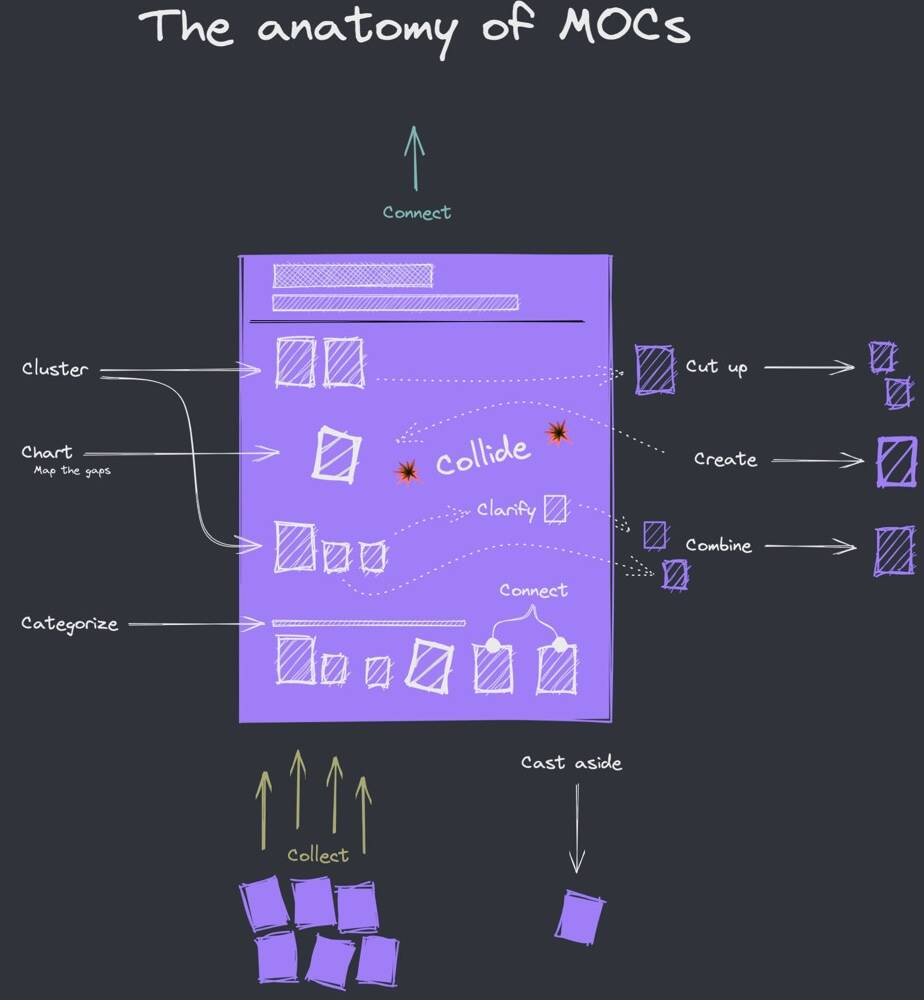A single note aims to provide you with amazing content.
While a map aims to provide you with valuable context.
A map of your content and a map of a territory share various similarities.
- Both provide an overview: Just like a map gives you a bird's-eye view of a territory, a content map gives you an overview of the structure and organization of your content.
- Both aid navigation: A map helps you navigate and find your way within a territory, while a content map helps you navigate through your content and locate specific information or sections.
- Both show relationships: Maps display the spatial relationships between different locations in a territory, while a content map can illustrate the relationships between different sections, chapters, or topics in your content.
- Both provide context: Maps provide context by showing the surrounding features and landmarks of a territory, and a content map provides context by showing how different pieces of content relate to each other and fit into the larger context.
- Both assist in planning and organizing: Just as a map helps in planning routes or identifying areas of interest in a territory, a content map helps in planning and organizing your content, ensuring logical flow and coherence.
Creating a map is how we engage in Idea Emergence at level three.

WHY IT MATTERS: As we continue to make connections, the system starts to come alive, naturally evolving itself. The beauty of the direct link is that it allows bigger ideas to emerge organically. This is a well-oiled PKM machine. However, there is no clear perspective.
As the number of notes grows, it becomes difficult to navigate through them quickly, even with excellent direct links between notes. The limitation is that you are always at eye-level with your notes, like being on the ground in a forest. And very often, you want a bird's-eye view to manage these growing relationships.
HOW TO MAKE A MAP
Maps of Content (MOCs) are one of the ultimate thinking tools. They have three basic, overlapping phases.
- Assemble: Assemble, collect, gather, curate, incubate. What are the related notes that you believe fit together in a map? Gather them all in one place.
- Develop: Collide, develop, rearrange, sharpen, cluster, chart, categorize, combine, cut up, cast aside, and otherwise craft. Once you have gathered all your ideas in one MOC, use it as a crucible where ideas can compete for positioning. This process will force you to distill them to their fundamental essence, considering their relative importance to each other and building stronger connections between them. The develop phase is where you make sense of how all these notes fit together.
- Reference: Navigate, reference, use, enjoy and converge with the whole. An MOC is your easy access point back into the topic—whether that's tomorrow or in ten years.
THE ASSEMBLE PHASE
When you explore the world, you come across various things and feel the desire to take action with them.
In your note-making space, this process involves encountering something interesting, making a note about it, and then continuing to add more notes on the same topic. However, you may start to worry about potentially losing these ideas. To address this concern, you decide to use a new digital workbench, called an MOC (Map of Content), to gather all your related notes and overcome this mental squeeze point.
THE DEVELOP PHASE
The development phase of creating a Map of Content (MOC) aims to bring together and organize the gathered ideas and notes. It is in the development phase that you make sense of how all the notes fit together, distilling them to their fundamental essence and considering their relative importance to each other. This process allows for the emergence of a comprehensive and interconnected map that provides a bird's-eye view of your content.
- Cluster ideas/notes together.
- Add lines between clusters (add the gaps).
- Chart the empty spaces between clusters (map the gaps).
- Create a new "thing" note.
- Create a new "statement" note.
- Collide your ideas.
- Clarify your note titles.
- Connect your notes.
- Cut up a note into two.
- Combine two notes into one.
- Cast aside notes that are no longer relevant.
- Categorize the notes in the MOC.
THE REFERENCE PHASE
In the third phase of MOCs, we integrate the map with the rest of your map library. The MOC serves as a concise summary of your thoughts for future you. An MOC provides easy access back into the topic, whether that's tomorrow or ten years from now.
more tomorrow,
Hunter
more tomorrow,
Hunter

